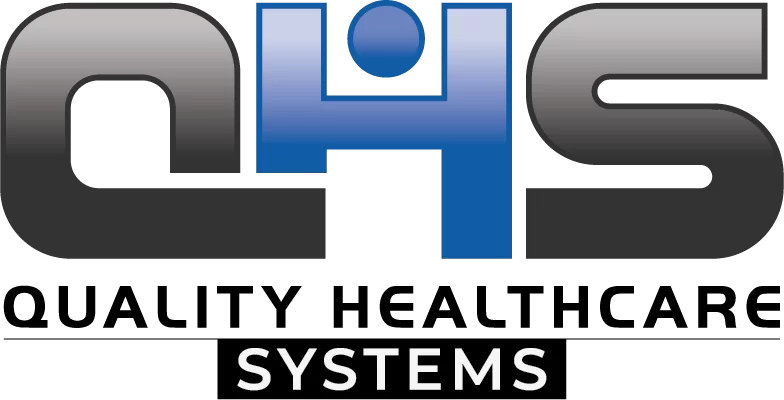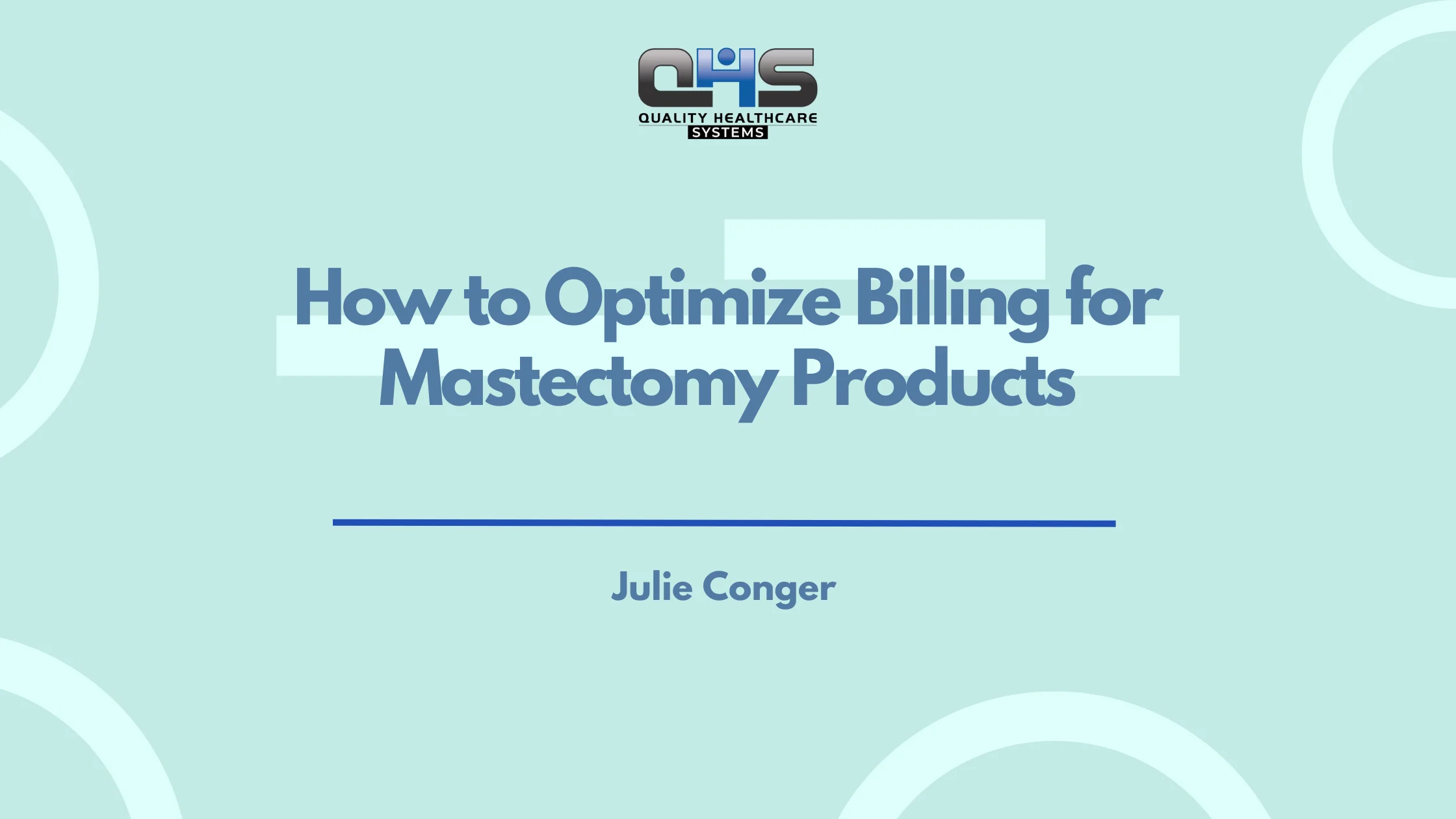Knowing which orthotics require pre-authorization is critical for avoiding insurance denials and payment delays. Whether you’re billing for ankle-foot orthoses (AFOs), spinal braces, or diabetic shoe inserts, most payers—especially Medicare Advantage, Medicaid, and commercial plans—have strict requirements for prior approval.
This guide explains which orthotic devices need pre-authorization, the supporting documents you must submit, and how to navigate payer-specific rules to ensure compliance and faster claim approvals.
1. What Is Pre-Authorization for Orthotics?
In the context of orthotics and durable medical equipment (DME), pre-authorization—also known as prior authorization or pre-approval—refers to the process by which a healthcare provider obtains approval from a patient’s insurance company before dispensing or billing for an orthotic device. This process helps determine whether the device is medically necessary based on the patient’s condition and diagnosis, as well as if it meets the payer’s coverage criteria.
Pre-authorization is often a mandatory requirement for custom orthotics, high-cost items, or when billing under certain HCPCS (Healthcare Common Procedure Coding System) Level II codes. Insurance providers use this step to prevent unnecessary spending and to verify that each device dispensed will provide clear clinical benefit to the patient.
Unlike prescription medications, where prior authorization is typically handled by a pharmacy benefits manager, orthotics prior authorization falls under the umbrella of medical DME benefits. This makes the documentation process more stringent and involves additional paperwork such as a Letter of Medical Necessity (LMN), clinical notes, and physician prescriptions.
It’s important to understand that the rules for orthotic device pre-approval vary widely by payer. While Medicare may not always require formal pre-authorization for many orthoses, commercial insurers and state Medicaid programs often have more restrictive policies.
Understanding whether an orthotic needs pre-authorization vs. just supporting documentation is essential for any provider, especially orthotists, physical therapists, and billing teams.
Which Orthotic devices need pre-authorization or pre-approval?
-
Custom Ankle‑Foot Orthoses (AFOs) (e.g., HCPCS L1940, L1960)
-
Custom Knee‑Ankle‑Foot Orthoses (KAFOs) (e.g., L2005, L2036)
-
Custom Spinal Orthoses (TLSO L0450; LSO L0631, L0650)
-
Custom Cranial Remolding Helmets (e.g., L0100)
-
Custom Upper Extremity Orthoses (elbow L3923; wrist/hand L3916)
-
Custom-Fabricated Diabetic Shoe Inserts (A5513)
-
Functional Electrical Stimulation Devices (e.g., E0770 + orthosis)
-
Dynamic Movement Orthoses (DMOs) for neurological rehab
-
Pediatric Gait Trainers with Orthotic Attachments
-
Cervical‑Thoracic‑Lumbar‑Sacral Orthoses (CTLSO) custom variants
-
Orthoses for Chronic Neuromuscular Conditions (e.g., spasticity AFOs L1932)
-
Any Orthotic Device Above Payer‑Specified Dollar Threshold (often $500+)
- Read: What is Fee Schedule?
2. Types of Orthotics That Commonly Require Pre-Authorization
When it comes to orthotics insurance coverage, not all devices are treated equally. Insurance companies categorize orthoses by complexity, customization level, and cost—which directly affects whether a device needs prior authorization. Below is an in-depth breakdown of orthotics most likely to require pre-approval and why.
A. Custom Orthotics: Almost Always Require Pre-Auth
Custom orthotics are designed and fabricated specifically for the patient using molds, scans, or biomechanical data. These include:
-
Custom-molded foot orthotics, often billed under A5513 for diabetic patients, are essential in preventing foot ulcers and amputations. Because they are tailored to individual foot structure and require podiatrist documentation, many commercial payers and Medicaid plans require pre-authorization.
-
Custom ankle-foot orthoses (AFOs) and knee-ankle-foot orthoses (KAFOs), such as L1940 and L2005, provide lower extremity support for individuals with neuromuscular disorders. Due to the fabrication process and associated cost, most insurers mandate prior authorization along with documentation from a neurologist or rehabilitation physician.
-
Custom spinal orthoses, such as thoracolumbosacral orthosis (TLSO, L0450) or lumbosacral orthosis (LSO, L0631), are prescribed for post-surgical support, scoliosis, or vertebral fractures. These are high-ticket items and commonly reviewed during pre-authorization to ensure clinical need, especially when ordered for chronic back pain with no recent imaging.
-
Custom wrist, elbow, shoulder, or cervical orthoses used in treating joint instability, carpal tunnel syndrome, or brachial plexus injuries often require pre-auth when custom-molded or mechanically assisted. Codes like L3923 (custom elbow orthosis) frequently trigger payer review.
Because these orthotics are custom-fabricated, pre-authorization not only protects insurance companies from unnecessary costs but also ensures the provider has completed medical justification, which includes:
-
Functional limitation assessment
-
Physician or specialist prescription
-
Biomechanical analysis or scan results
-
Previous conservative management attempts (e.g., PT, bracing)
B. High-Cost or Specialized Orthotics: Trigger Scrutiny and Review
Some orthotics are classified as “high-dollar” or “specialty” devices and nearly always require prior approval, even when off-the-shelf variants exist. These include:
-
Functional electrical stimulation (FES) devices, such as WalkAide or Bioness L300, which are used for foot drop management in patients with stroke, MS, or incomplete SCI. These devices cost thousands of dollars and are often categorized under investigational or emerging technology. Thus, insurers require extensive medical records, gait analysis, and prior therapy trials to approve them.
-
Cranial remodeling orthoses, like the STARband (L0100), are used to correct positional plagiocephaly in infants. Most private insurers and Medicaid plans require pre-auth before approving coverage, which is often time-sensitive due to infant growth stages. Documentation must include pediatric neurology or craniofacial specialist notes, diagnostic imaging, and age parameters (usually under 18 months).
-
Dynamic movement orthoses (DMOs), used in pediatric or neuro-rehabilitation settings for improving proprioception, are often considered adjunct therapy tools. They require justification not only for diagnosis but also for goals such as functional gains, therapy integration, or tone management.
These orthotics don’t always fall into traditional L-code classifications, making pre-authorization even more critical since many insurers have device-specific policy reviews.
Other Services Quality Healthcare Systems Provides:
A/R Management | Revenue Cycle Management | Provider Credentialing
C. Orthotics for Chronic Neuromuscular Conditions: Frequently Flagged for Review
Patients with long-term conditions such as stroke, multiple sclerosis, cerebral palsy, or Parkinson’s disease often require ongoing orthotic support. Although these devices are essential for mobility, many are flagged for pre-auth due to frequency of re-issue or the potential for device upgrades.
Examples include:
-
Ankle-foot orthoses (L1932, L1960) used for foot drop or spasticity
-
Knee orthoses (L1832) with joint support features
-
TLSO devices (L0456) for postural control in neuromuscular scoliosis
Since these conditions evolve over time, insurance companies want to ensure:
-
The device is still effective based on recent clinical assessment
-
There is no overutilization or redundant issuance
-
A physical or occupational therapist has re-evaluated function
In many cases, insurers require updated physician documentation every 6 to 12 months along with a current prescription—even if the patient has had the same device in the past.
Related Posts:
- Bill for Transtibial (Below-Knee) Prosthetics?
- Coding Requirements for Transfemoral (Above-Knee) Prosthetics?
- Documentation Requirement for Myoelectric Arm Prosthetics Reimbursement?
3. Common Payers and Their Pre-Authorization Policies for Orthotics
Navigating pre-authorization for orthotics becomes more complex when dealing with multiple payers—each with their own rules, thresholds, and documentation standards.
Understanding the nuances among Medicare, Medicaid, and commercial insurers can save your billing team from avoidable denials and time-consuming appeals. Below, we outline how each type of payer typically handles orthotic pre-approvals.
Medicare: Documentation Over Pre-Auth
Medicare traditionally does not require prior authorization for most orthotic devices. Instead, the focus is on medical necessity proven through detailed clinical documentation. However, don’t be mistaken—while pre-auth might not be required, post-payment reviews and audits are frequent.
Key Points:
-
Medicare Part B covers orthotics under DMEPOS if the device is medically necessary and meets Local Coverage Determinations (LCDs) and Policy Articles (PAs).
-
Codes like L1951 (ankle orthosis) or L0631 (lumbar orthosis) are covered without prior authorization but must include:
-
A signed prescription
-
Chart notes demonstrating functional impairment
-
Proof of fitting, delivery, and use
-
⚠️ Note: CMS has a prior authorization program for certain DMEPOS items that are frequently subject to fraud, waste, or abuse. Some orthotics (e.g., L0650) may fall under this category in specific states.
Medicaid: State-Specific and Often Stringent
Medicaid pre-authorization policies vary by state, and in most cases, custom or high-cost orthotics require pre-approval. Some states set dollar thresholds (e.g., any orthotic over $500) while others require pre-auth based on the type of orthosis or diagnosis code.
Examples:
-
California Medi-Cal requires pre-auth for all custom spinal orthoses
-
New York Medicaid mandates pre-approval for any cranial orthosis or pediatric DME
-
Texas Medicaid may deny custom AFOs unless the patient has a qualifying neurologic diagnosis (e.g., spastic CP)
Required documentation often includes:
-
Letter of Medical Necessity (LMN)
-
Physical or occupational therapy notes
-
Manufacturer’s quote or justification for custom fabrication
Providers should maintain access to the Medicaid Provider Manual of their state and use portal-based requests (such as TMHP, NCTracks, or Medi-Cal’s TAR system) for efficient submission and tracking.
Commercial Insurers: Pre-Auth is the Rule, Not the Exception
Commercial payers like Blue Cross Blue Shield (BCBS), Aetna, Cigna, and UnitedHealthcare (UHC) are typically stricter than Medicare when it comes to orthotics prior authorization. These payers often have formal lists of HCPCS codes that require pre-auth and will deny claims outright if authorization is not obtained in advance.
Common Practices:
-
Most custom orthotics, especially those with codes like L1940, L1832, or L0100, require pre-auth.
-
Coverage decisions are based on medical policy bulletins available on the payer’s website or provider portal.
-
Many plans require prior auth for diabetic inserts (A5513) beyond the initial pair.
-
Pediatric orthotics often need developmental specialist notes or therapy reports.
Pro Tip: Use provider portals like Availity (BCBS, Aetna) or NaviNet (UHC) for faster submissions, auto-checks on CPT/HCPCS code requirements, and real-time tracking of authorization status.
Other Payers: TRICARE, Workers’ Comp, and VA
-
TRICARE generally requires pre-auth for orthotics that are custom-made or over a certain dollar value. Submit through Humana Military or HealthNet portals.
-
Workers’ Compensation claims require state-mandated pre-auth procedures, often reviewed by case managers.
-
Veterans Affairs (VA) does not require pre-auth in the traditional sense but follows an internal consult request process through the VA prosthetics department.
4. Documentation Needed for Orthotics Pre-Authorization
Insurance companies won’t approve orthotic devices—especially custom or high-cost ones—without detailed medical evidence. If you submit incomplete or vague records, you’re likely to face delays or outright denials. Here’s a complete list of the specific documents most payers require when reviewing an orthotics pre-authorization request.
1. Prescription (Rx) from a Licensed Physician
-
Must be signed and dated by an MD, DO, or DPM (podiatrist)
-
Should clearly specify:
-
Type of orthotic (e.g., custom AFO, cranial helmet)
-
Diagnosis (with ICD-10 code)
-
Medical necessity and functional goal (e.g., improve gait, prevent ulcers)
-
Duration of use (e.g., permanent vs. temporary)
-
Tip: Include the provider’s NPI and office address to avoid admin rejections.
2. Letter of Medical Necessity (LMN)
This is not optional for most commercial payers and Medicaid programs. The LMN must be typed, dated, and signed by the treating physician and include:
-
Patient’s name, DOB, and diagnosis
-
Detailed explanation of the functional deficits (e.g., foot drop, scoliosis, spasticity)
-
Explanation of why a custom device is required vs. off-the-shelf
-
History of failed conservative treatments (e.g., PT, standard bracing)
-
Clinical justification for any add-ons or modifications (e.g., joints, padding)
Important: For pediatric patients, include developmental history and specialist evaluations (neurologist, pediatrician).
3. Clinical Progress Notes (From Treating Physician)
Attach full chart notes, not summaries or checklists. These should match the prescription and LMN, and include:
-
Date of encounter
-
Provider observations
-
Objective functional assessments (e.g., gait instability, muscle tone, joint ROM)
-
Referrals to orthotics, PT, or rehab medicine
-
Current mobility aids used (if any)
-
Prior orthotic use and performance
Avoid red flags: Conflicting diagnoses or missing timelines are common reasons for pre-auth denial.
4. Physical or Occupational Therapy Evaluation Report (if required)
Some payers request a PT/OT evaluation to validate:
-
Impact on function
-
Patient compliance
-
Recommendations for orthotic features or settings (e.g., joints, straps)
Usually requested for:
-
Neuromuscular conditions (e.g., CP, MS)
-
Post-stroke orthoses
-
Pediatric patients
Include therapy clinic’s NPI and credentialed provider signature.
5. Imaging Reports or Diagnostics (When Applicable)
Attach any recent relevant diagnostics:
-
X-rays for scoliosis, fractures, limb discrepancies
-
MRI or CT if underlying neurological causes exist
-
EMG reports if spasticity or nerve dysfunction is cited in LMN
These help validate the medical necessity of bracing and rule out contraindications.
6. Molding or Scan Justification (for Custom Orthotics)
For orthotics that require:
-
3D scan
-
Plaster mold
-
Foam impression box (e.g., for A5513)
Attach:
-
A statement by the orthotist or physician explaining why custom molding is essential
-
Date and method of capture (photo if required)
-
Measurement sheet or CAD output (if available)
This is particularly necessary for:
-
Custom AFOs (L1940, L1960)
-
Custom foot orthotics (A5513)
-
Cranial helmets (L0100)
7. Manufacturer’s Quote or Product Specification Sheet (For High-Cost Devices)
When billing for expensive or specialty orthotics (like FES devices, DMOs, STARband helmets), insurers may request a quote or cost breakdown to validate billing.
Include:
-
MSRP or negotiated rate
-
Itemized features
-
CPT/HCPCS code linked to the product
Attach it as a PDF or invoice-style document with practice letterhead.
8. Face-to-Face Encounter Form (Medicare & Some Medicaid)
Medicare mandates a Face-to-Face (F2F) visit within 6 months before the orthotic is ordered. Documentation must include:
-
Signed, dated progress note
-
Details of condition, orthotic need, and prognosis
-
Physician signature
Some Medicaid programs (e.g., in Texas, New York) also adopt this rule for custom spinal or limb orthoses.
9. Delivery or Dispensing Protocol (After Pre-Auth Approval)
Once approved and delivered, keep proof of:
-
Patient delivery receipt with date, time, and signature
-
Labeling or serial number documentation (for custom builds)
-
Fitter credentials or orthotist note confirming fitting and patient training
Even if not required at pre-auth stage, these will be essential during audits or claim disputes.
5. HCPCS Codes Most Likely to Trigger Pre-Authorization
Insurance payers often determine whether pre-authorization is required for orthotics based on the HCPCS (Healthcare Common Procedure Coding System) Level II codes submitted with the claim. Certain codes, especially those linked to custom fabrication, high cost, or high denial rates, are flagged by default for medical review or pre-auth.
Below is a categorized breakdown of the most frequently flagged orthotic HCPCS codes that often require pre-authorization, along with why they’re high-risk:
A. Lower Extremity Orthoses
These are often scrutinized due to their complexity and cost. Many of them are custom-fabricated or have mechanical components.
| HCPCS Code | Description |
|---|---|
| L1902 | AFO, pre-fabricated, off-the-shelf |
| L1906 | AFO, multiligamentous ankle support |
| L1940 | AFO, plastic or other material, custom-fabricated |
| L1960 | AFO, metal, custom-fabricated |
| L1970 | AFO with dorsiflexion assist, custom |
| L2005 | KAFO, double upright with mechanical knee joint |
| L2036 | KAFO, custom, with knee locking mechanism |
💡 Why Pre-Auth?
These devices require gait analysis, physician notes, and usually a PT or orthotist evaluation. Payers want proof that off-the-shelf models were ruled out and custom fitting is necessary.
B. Upper Extremity Orthoses
Arm, wrist, and elbow orthoses are often prescribed post-injury or post-surgery and must align with orthopedic or neurology-based treatment plans.
| HCPCS Code | Description |
|---|---|
| L3916 | Wrist-hand orthosis, includes fitting and adjustment |
| L3923 | Elbow orthosis, custom fabricated |
| L3930 | Hand orthosis, pre-fabricated, includes fitting |
💡 Why Pre-Auth?
For any custom variant or use in neurologic rehab, pre-auth is likely. Documentation must rule out functional restoration with PT alone.
C. Spinal Orthoses
Spinal orthotics are commonly flagged due to their high dollar value, potential overuse, and increased fraud concerns in recent years.
| HCPCS Code | Description |
|---|---|
| L0456 | TLSO, pre-fab, includes fitting |
| L0631 | LSO with anterior-posterior control, prefabricated |
| L0650 | LSO, custom-fabricated with rigid anterior frame |
| L0648 | LSO, semi-rigid, prefabricated, adjustable |
💡 Why Pre-Auth?
CMS has placed several LSO/TLSO codes on its Required Prior Authorization List for DMEPOS due to billing abuse. Expect pre-auth unless you’re in a rare exempt region.
D. Diabetic Foot Orthotics
These are frequently used but often abused, which is why commercial insurers flag them more than Medicare.
| HCPCS Code | Description |
|---|---|
| A5513 | Custom-molded multi-density inserts for diabetics |
| A5514 | Direct-formed insert molded to foot |
💡 Why Pre-Auth?
Most plans need recent documentation from a podiatrist or endocrinologist plus proof of diabetic foot risk (neuropathy, deformity, etc.).
E. Cranial and Pediatric Orthotics
High scrutiny due to price, rapid growth changes, and potential misuse.
| HCPCS Code | Description |
|---|---|
| L0100 | Cranial remolding orthosis (e.g., STARband) |
| L0180 | Cervical orthosis, custom fabricated |
💡 Why Pre-Auth?
Pre-auth is always required for L0100. Must include pediatric neurology eval, imaging, and documentation of plagiocephaly or brachycephaly diagnosis.
F. Functional Electrical Stimulation (FES) Orthotics
These are among the most denied devices without prior approval due to their niche nature and high price point.
| HCPCS Code | Description |
|---|---|
| E0770 | FES device used with orthosis |
| L2999 | Orthotic, not otherwise specified (used for advanced custom builds) |
💡 Why Pre-Auth?
Requires neurology documentation, failed conservative therapy, and functional assessments. Often denied if used for “convenience” vs. “function restoration.”
6. Strategies to Avoid Orthotics Pre-Authorization Denials
Orthotic pre-authorization denials waste time, delay patient care, and impact your revenue cycle. The key to minimizing these denials lies in building rigorous workflows, maintaining clean documentation, and using payer-specific knowledge to preempt common errors. Below are tested strategies used by high-performing DME and orthotics billing teams:
1. Verify Benefits and Pre-Auth Requirements Before Scheduling
Before even evaluating a patient for an orthotic, your billing team should verify:
-
Whether the orthotic requires pre-authorization based on payer, plan, and code
-
Patient’s deductible and copay obligations
-
Allowed quantity limits (e.g., number of AFOs/year)
-
In-network status of provider and orthotist
2. Build a Standardized Document Checklist Per Device
Don’t reinvent the wheel for every submission. Create device-specific pre-auth packets for:
-
AFOs
-
KAFOs
-
Spinal braces
-
Cranial helmets
-
Diabetic inserts
Each packet should contain:
-
Prescription (Rx)
-
Letter of Medical Necessity (LMN)
-
Progress notes
-
Imaging (if required)
-
Manufacturer’s quote (for high-cost or custom builds)
-
PT/OT eval (when relevant)
3. Double-Check Physician Documentation for Medical Necessity
Even if the LMN is submitted, denials occur when chart notes do not support the same diagnosis or functional impairment. Train providers to include:
-
Onset of condition
-
Objective findings (e.g., balance deficits, weakness)
-
Failed alternatives (e.g., PT, over-the-counter braces)
-
Rationale for orthosis selection and custom fabrication
🩺 For Medicare: Make sure the physician visit occurred within 6 months prior to the orthotic order, or the request may be denied on timing non-compliance.
4. Follow Payer-Specific Pre-Auth Processes Exactly
Each payer has its own quirks:
-
UnitedHealthcare may require you to submit via Optum portal and complete a medical review form
-
Aetna often denies cranial orthoses unless head circumference percentiles and asymmetry measurements are included
-
Medicaid requires exact diagnosis codes and LMNs signed by enrolled Medicaid providers
🔁 Avoid Denials By:
-
Using payer templates for LMNs (available via provider portals)
-
Uploading documents in required file types and formats
-
Attaching all required secondary forms or imaging up front
5. Track Authorization Expiry and Usage Windows
Approved pre-auths have expiry dates (typically 30 to 90 days). If the device is not delivered or billed within that window, the claim may be denied as “unauthorized.”
🗓️ Use a billing tracker or EHR integration to:
-
Flag upcoming expirations
-
Monitor unused authorizations
-
Alert staff to re-verify if the patient delays care
6. Avoid Generic HCPCS Coding for Custom Orthotics
Using L2999 (unlisted orthotic) or vague modifiers without justification is a red flag for denial.
If you must use an unlisted code:
-
Attach a detailed description from the manufacturer
-
Include product photos and spec sheet
-
Explain why no existing HCPCS code applies
7. Document Patient Communication and Appeals
If a request is denied, keep records of:
-
Appeal letters
-
Peer-to-peer reviews
-
Medical Director decisions
-
Patient notification
This protects your practice legally and operationally. Some insurers allow retroactive approval on appeal if the denial was based on missing—but not erroneous—information.
Frequently Asked Questions
Do custom orthotics require pre-authorization?
Yes, custom orthotics typically require pre-authorization from most insurance plans. These include ankle-foot orthoses (AFOs), knee-ankle-foot orthoses (KAFOs), cranial remolding helmets, and other high-cost, custom-fitted braces. Documentation must show medical necessity and include a provider’s prescription, clinical notes, and proof that off-the-shelf alternatives were insufficient.
What documents are needed for orthotics pre-authorization?
The documents needed for orthotics pre-authorization include a prescription, a letter of medical necessity, and supporting clinical documentation. This may also involve PT/OT assessments, X-rays or MRIs, and manufacturer details if the device is custom.
How long does it take to get orthotics approved by insurance?
Orthotics pre-authorization typically takes 5 to 14 business days depending on the payer. Commercial plans may process faster (5–7 days), while Medicaid or Medicare Advantage may take longer. Delays occur if documents are incomplete or diagnosis codes are inconsistent.
What happens if you deliver orthotics without pre-authorization?
If orthotics are provided without required pre-authorization, the insurance claim will be denied. In such cases, the provider may have to absorb the cost, or the patient will be financially responsible—depending on what financial responsibility disclosures were signed before treatment.
Are off-the-shelf orthotics exempt from pre-authorization?
Some off-the-shelf orthotics do not require pre-authorization, but this depends on the payer and diagnosis. Items like L1902 (AFO, off-the-shelf) are often exempt, but insurers may still request pre-auth if the case involves a high-risk diagnosis, surgery, or state-specific Medicaid rules.
Is there a difference between prior authorization and pre-approval?
No, prior authorization and pre-approval generally mean the same thing in insurance terminology. Both refer to the insurer’s approval of a service or device before it is delivered, based on medical necessity and plan benefits.
Can patients appeal if orthotics pre-authorization is denied?
Yes, patients and providers can appeal orthotics pre-authorization denials by submitting an appeal letter and additional medical evidence. Common appeal elements include updated chart notes, specialist opinions, and supporting documentation proving the device is necessary and appropriate.
Do Medicaid orthotics pre-auth rules vary by state?
Yes, Medicaid pre-authorization rules for orthotics vary by state. Each state has its own criteria, documentation requirements, and submission portals. For example, Texas uses TMHP, California uses Medi-Cal TAR, and New York Medicaid requires prior approval through eMedNY.
Which HCPCS orthotic codes commonly require prior authorization?
Common orthotic HCPCS codes that often require prior authorization include L1940, L0631, L0100, and A5513. These codes are linked to custom AFOs, spinal braces, cranial helmets, and diabetic inserts. They are flagged due to cost, customization, or prior misuse patterns.
What is Medicare’s requirement for face-to-face visits for orthotics?
Medicare requires a face-to-face visit within 6 months before ordering certain orthotics. This rule applies to devices under the DMEPOS Prior Authorization Program, including some LSOs, TLSOs, and AFOs. The visit must be documented in the provider’s notes.





